Organization of automatic fire safety in the administrative building. Categories of explosion and fire hazard of buildings and premises. Categorization of warehouse, industrial premises by fire, explosion hazard
rules fire safety– mandatory measures that must be strictly observed. But these rules are established with the help of certain characteristics, among which the purpose of the functional fire hazard building.
To prevent a fire, it is very important to correctly classify a particular building, structure, structure or fire compartment.
The final decision will be taken into account when drawing up fire safety rules for a particular organization. In the event that it is determined incorrectly, these rules may be grossly violated, as a result of which the chances of starting a fire will increase significantly. The functional purpose is identified according to three characteristics, the most important of which is the functional fire hazard class of buildings (structures, etc.).
Security class as definition
The functional fire hazard class of buildings is a classification characteristic identified by the purpose and details of the use of specific buildings.
The features of production technology and fire hazard are also taken into account.
The need for proper identification of the destination has been identified. Further, the section itself is divided into classes using special criteria.
Degree of fire resistance
Data on this degree for construction must be recorded in the relevant documentation.
Constructive fire hazard class
It is determined by the degree of influence (columns, crossbars, coatings, fire barriers, etc.) on the spread of fire during a fire.
Functional fire hazard class
The list of signs by which the class number is revealed is considered below. It is necessary to know that the building and its parts that are connected common function, are divided into different classes depending on the method of its operation and on how safe it is for people to stay there during a fire. This takes into account their age, physical health, the probability of being in a sleeping state, the approximate number of people concentrated inside.
Classification
There are five functional fire safety assignment classes in total.
First
These are buildings that are intended for permanent or temporary residence of the population. These, as a rule, are operated around the clock, and the composition of the people inside, and their physical health, sometimes polarly differ. For structures of this type, the presence of rooms for sleeping is standard, which means that the possibility of the presence of sleeping people exists. Buildings of this class are required to have several fire barriers and independent escape routes (by law). Designation - F1.
So, direct examples.
- F1.1. Institutions for children preschool age, houses of non-apartment type for elderly people, non-apartment buildings for people with handicapped, buildings of boarding schools intended for sleeping, as well as sleeping buildings of children's institutions.
- F1.2. Hotel complexes, motels, boarding houses, student or working hostels, dormitory buildings of sanatoriums and rest houses, campsites.
- F1.3. Residential buildings apartment type.
- F1.4. Residential houses of one-apartment type, block houses.
Second
It refers to cultural and leisure places of recreation, entertainment institutions, in which there is always a large crowd of people. 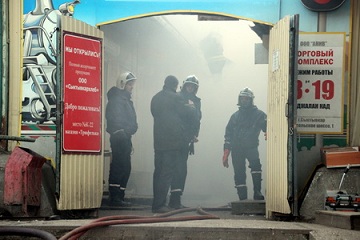
- F2.1. Theater halls and cinemas, halls for concerts, special buildings with stands for viewing sports events, libraries, as well as other establishments with a designated number of possible visitors.
- F2.2. Exhibition halls, museums, dance halls and indoor dance floors.
- F2.3. Institutions that are in category F2.1., located in open space.
- F2.4. Institutions that are in category F2.2., located in open space.
The third
 It includes the part of enterprises that are engaged in the service sector. Despite the considerable number of employees, buildings of this category are characterized by a predominant number of visitors (rather than workers). This category is labeled as F3. It includes a number of institutions.
It includes the part of enterprises that are engaged in the service sector. Despite the considerable number of employees, buildings of this category are characterized by a predominant number of visitors (rather than workers). This category is labeled as F3. It includes a number of institutions.
- F3.1. Outlets (shopping centers, department stores, shops, hyper- and supermarkets, etc.).
- F3.2. points Catering.
- F3.3. Railway, bus, sea, river stations, as well as airports.
- F3.4. Multidisciplinary medical institutions providing services to patients in the institution and at home.
- F3.5. Enterprises providing household and public utilities(post office, savings bank, notary office, office of a legal services firm, transport agencies, beauty salons, hairdressers, ateliers, dry cleaning services, etc.). Religious institutions (churches, temples, mosques, etc.), as well as ritual institutions that are not designed for a certain number of visitors.
- F3.6. Sports and recreation complexes, training facilities that do not have viewing places for spectators, baths and saunas, sanitary facilities, including showers, dressing rooms, washrooms and toilets, sanitary rooms, smoking rooms, etc.
Fourth
It has the designation F4 and includes educational institutions, research / design organizations. 
- F4.1. Primary, middle and high schools, out-of-school educational institutions, colleges, vocational schools.
- F4.2. Institutes and universities, institutions for advanced training and further recertification.
- F4.3. Banking organizations, offices, offices, business business centers, publishing houses, editorial organizations, information bureaus, design institutions, management bodies.
- F4.4. Objects fire brigade(fire stations).
Fifth
The last, class F5, includes buildings of economic and industrial orientation, storage facilities, buildings and so on.
- F5.1. Buildings aimed at production activities, laboratories and various workshops.
- F5.2. Premises dedicated to the provision of storage services, unrepaired car parks without specialized maintenance, storage for books, institutions that store and record archival papers. Agricultural buildings.
The legislative framework
All classes of premises are determined by 123 - F3, dated 07/22/2008 " Technical regulation on fire safety requirements” and 117-F3 dated July 10, 2012 “Introduction of additions to the Federal Law”. Guided by these two fundamental documents, the classes and subclasses of the building are determined.
For example, the functional fire hazard class of the boiler room is F5.1, since this is an industrial premises, but by checking existing equipment, the category of the premises is checked empirically and assigned, depending on the results obtained, A - the most dangerous or D - the least dangerous.
It is worth remembering that laboratories and workshops located in buildings of categories F1–F4 belong to F5.
It can be difficult to determine which category a particular building belongs to, for example, a garage, but usually for a garage it is F5.2
In conclusion, we re-emphasize the importance of correctly determining the functional purpose of an enterprise, putting forward new arguments.
It is on the basis of the class that fire requirements are formed, which often determine the number of entrances and exits from the building.
In addition, these data establish the possible presence fire alarm, decoration of escape routes and many other factors affecting the safety of staying in a particular building.
Unfortunately, many people treat such rules negligently. Meanwhile, violation of fire rules, even if unwitting, can lead to irreversible consequences. That is why it is important to correctly determine the functional fire hazard class of each building and follow the relevant regulations. It is also important to prevent fires in everyday life.
I did not know that buildings are divided into classes according to fire functionality, and that each has its own requirements. In general, a fire in a room, any, is a very dangerous business ... I would not like to meet him face to face. I would very much like the fire safety rules to be respected and not violated. And the check should be carried out as often as possible, by the relevant authorities.
fire hazard of substances different kind materials - a set of properties that characterize their ability to quickly ignite and further spread the combustion process, which can result in a fire or even an explosion.
Classification of buildings based on functional fire hazard
Within the framework of this aspect, it is necessary to interpret some important concepts. Buildings (their parts, fire compartments, structures) are premises (groups of premises) that are functionally interconnected according to such a criterion as functional fire hazard.
Depending on the methods of their operation and on the degree of threat of people being inside them in a fire situation (taking into account their age, the probability of being in a state of sleep, physical condition, etc.), it is customary to distinguish the following classes:
- F1 - class of functional fire hazard of a building intended for temporary stay, residence of people ( preschool institutions, hotels, single and multi-family hostels, specialized homes for the disabled and elderly, hospitals, etc.).
- F2 - class, which includes the premises of entertainment, various kinds of cultural and educational institutions (cinemas, circuses, libraries, theaters, dance and concert halls, sports facilities with stands, museums, etc.).
- F3 - class of functional fire hazard of the building of enterprises whose activities are related to public services ( trade establishments, public catering organizations, clinics, banks, railway stations, post offices, etc.).
- F4 - class, which includes buildings of educational, research institutions, editorial, publishing, information and design organizations, fire stations, buildings of government institutions.
- F5 - class of functional fire hazard of premises, such as book depositories, warehouse (industrial) premises (this also includes similar buildings from the above classes, as well as laboratories).
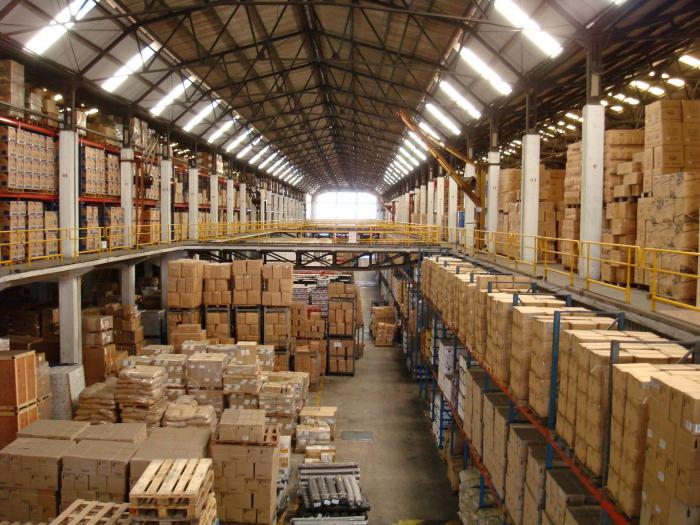
Why is this classification needed and where is it indicated?
The fire hazard class of the premises is indicated in a special project documentation to the corresponding object. This classification is used in order to establish requirements for a constructive and space-planning decision regarding buildings, as well as a regulation of these requirements (in relation to the evacuation of people during a fire).
Categories of explosion and fire hazard of buildings and premises
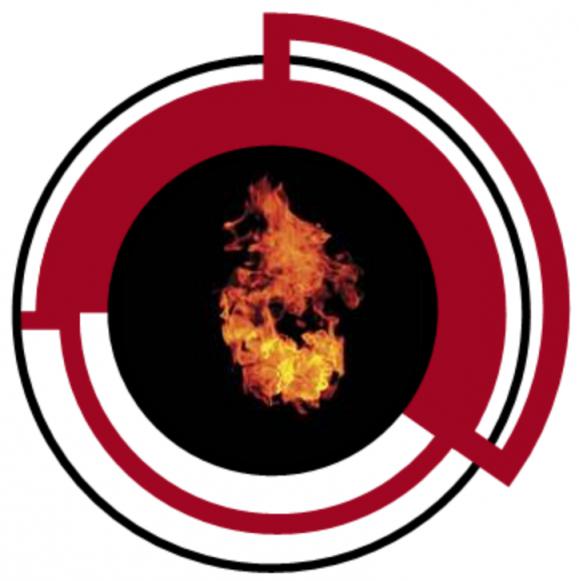
The concept of "categorization", from the point of view of the aspect under consideration, is interpreted as the correlation of structures (buildings) according to fire, explosion and fire danger to certain categories. It is mandatory, and the following objects are subject to it:
- All industrial buildings (buildings, structures), workshops, laboratory and industrial premises (functional fire hazard class F5.1).
- Any outdoor installations in the form of a complex technical equipment and devices that are located outside buildings (structures).
- Warehouse buildings (buildings, structures), as well as parking lots (excluding repairs and Maintenance), book depositories, warehouses and archives (functional fire hazard class F5.2).
Categorization is carried out exclusively for warehouse, industrial premises. The definition of premises for fire hazard occurs at the design stage on the basis of fire safety standards or departmental documents developed on their basis.
Based on the fire and explosion hazard, all rooms are divided into five B, C1-C4, G, D.
The categories of explosion and fire hazard of premises are defined specifically for the most adversely affecting fuel (regarding fire and explosion in apparatuses, premises), its quantity, nuances technological process, fire hazardous properties.
Categorization of warehouse, industrial premises by fire, explosion hazard
The main characteristics of the materials and substances present in the room |
|
1. A (explosive) | Flammable liquids, (flash point above 28 ° C), which, in an amount sufficient to form explosive liquid-gas mixtures, and which, when ignited, develop overpressure explosion ˃ 5 kPa Substances, materials that are capable of exploding, burning in the process of interaction with oxygen, water or with each other (if the value of the calculated overpressure of the explosion ˃ 5 kPa) |
2. B (explosive) | Combustible fibers or dust, flammable liquids (flash point above 28 ° C) in an amount that forms explosive dust or vapor mixtures, during the ignition of which an excess explosion pressure of ˃ 5 kPa appears |
3. B (flammable) | Liquids (combustible, slow-burning), substances (solid combustible, slow-burning), including fibers and dust, as well as materials and substances that, in the process of interaction with oxygen, water or with each other, can only burn (if the premises in which they are located, do not fall under the above categories) |
Non-combustible materials, various kinds of substances (in a red-hot, hot or molten state), which, during processing, emit heat, flame, sparks, flammable liquids and gases, solids intended for disposal as fuel. |
|
Non-combustible materials, all kinds of substances in a cold state. |
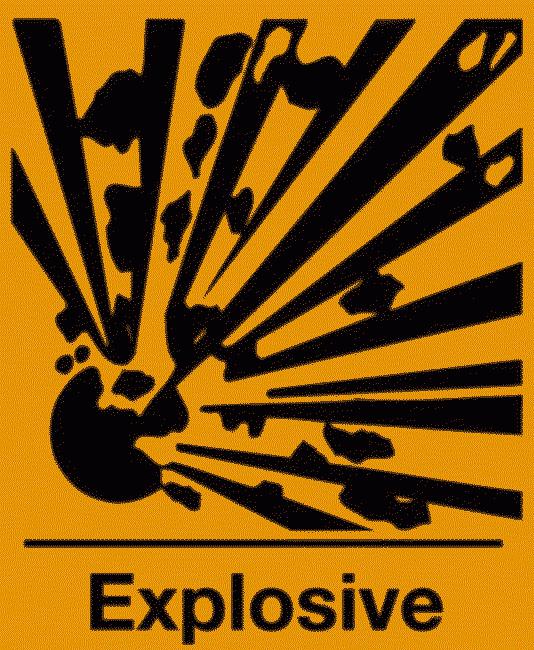 The determination of the fire hazard category of premises is carried out on the basis of the following non-coercive instructions:
The determination of the fire hazard category of premises is carried out on the basis of the following non-coercive instructions:
1. The object belongs to the first category (A) provided that the total area of its building exceeds the total area of all premises inside it (200 m 2) by 5%. It is allowed not to classify a building as category A (explosive) if its total area does not exceed the established value (25%), calculated from total area all premises located in it (no more than 1000 m 2), provided that they are equipped with special installations automatic fire extinguishing.
2. A building falls under category B, which, firstly, cannot be classified as category A. And secondly, its value of the total area of \u200b\u200bits premises (A, B) exceeds the value of 5%, calculated from the total area of the entire complex of premises located inside it (or 200 m 2). It is permissible not to classify a building as belonging to this category, provided that the total area of its premises (A, B) does not exceed 25%, calculated from the total area of \u200b\u200ball premises located inside it (no more than 1000 m 2), if they are equipped with installations special automatic fire extinguishing.
3. The conditions for classifying a building as category B are:
- the value of the total area of premises (A-B) exceeds 5% (or 10% in the absence of premises of other categories) of the total area of premises located inside this building.
It is permissible not to classify a building as belonging to this category if the total area of its premises (A-B) does not exceed 25% of the total area of all premises located inside it (no more than 3500 m 2), provided that they are equipped with special automatic fire extinguishing installations.
4. The conditions for classifying a building as category G are:
- it does not fall into any of the above categories;
- the value of the total area of premises (A-D) exceeds 5% (or 10% in the absence of premises of other categories) of the total area of premises located inside this building.
It is permissible not to classify a building as belonging to this category if the total area of its premises (А-Г) does not exceed 25% of the total area of all premises located inside it (not more than 5000 m 2), provided that premises of category A- are equipped with special automatic fire extinguishing installations AT.
Determining the category of fire hazard of buildings acts as a guideline in the matter of establishing the likelihood of occurrence of individual fires (the level of fire resistance of buildings) and solid (building density).
How to calculate the category in question?
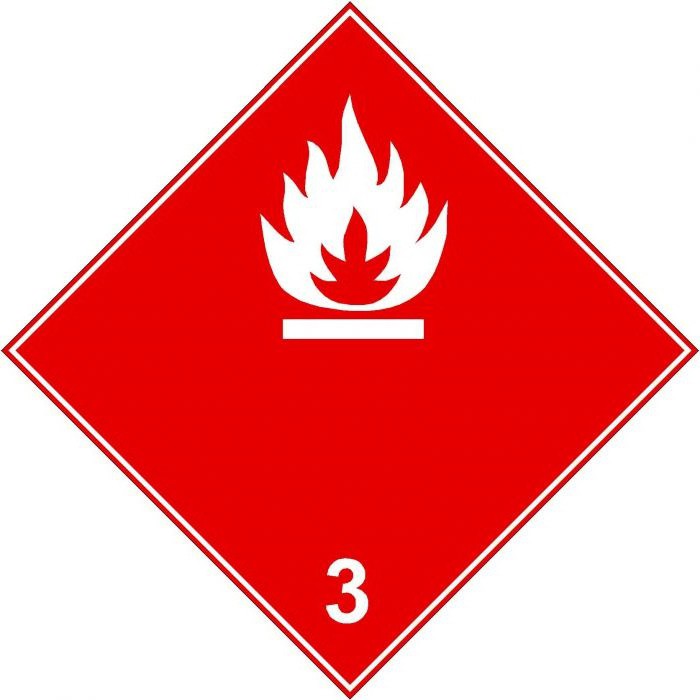
To carry out the calculation of the fire hazard category, you will first need to collect data on the corresponding room (necessarily its plan). Next, measure the walls and the height of the ceilings of the areas most dangerous in the fire process (this is done directly by fire safety specialists). Then define temperature regime object being assessed, as well as the material from which the floor covering is made. It is important to establish the presence special systems fire extinguishers and ventilation outlets.
Calculation of the fire hazard category - calculations that allow you to establish the onset of an explosion (fire) based on the analysis of stored, used and processed substances, as well as the technological process and equipment. It is regulated Russian legislation in the field of fire safety.
The calculation of the fire hazard category of the premises is carried out in order to form the relevant requirements regarding the area under consideration, which are aimed at reducing the likelihood of a fire, as well as adequately providing professional fire protection. fire protection people (valuable property) in the event of its occurrence.
Classification of structures based on constructive fire hazard
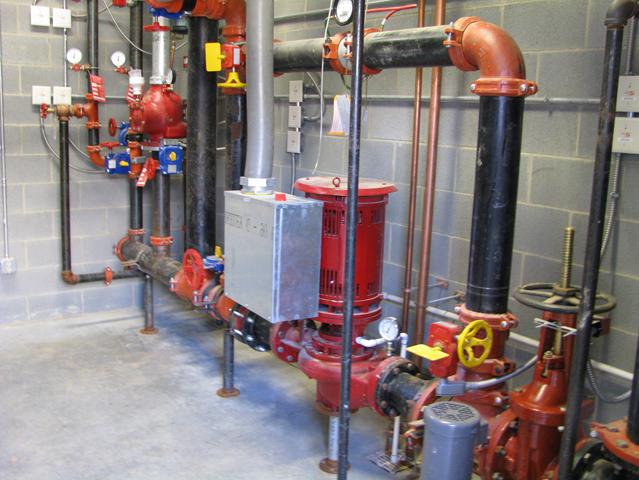
The existing class of constructive fire hazard of a structure (building) is established by the degree of participation of the relevant building structures in the process of fire development and fire formation dangerous factors.
There are 4 classes within the considered aspect: C0, C1, C2, C3. It is important to note that the constructive fire hazard class of a structure is directly dependent on the fire hazard classes of the main load-bearing, enclosing structures (building): crossbars, walls, ceilings, stairwell walls, columns, fire barriers, trusses, partitions, coatings, platforms and marches stairs. The fire hazard in relation to filling the openings of the building is not standardized at the same time (the exception is the openings of fire barriers).
Class C0 is the best in terms of fire safety. Here, all structures are made exclusively of non-combustible materials (they do not burn, do not produce a thermal effect, are not damaged, do not form toxic smoke).
Class C1 - use in buildings of structures made using slow-burning materials.
Class C3 - the majority of structures (in addition to barriers, structural ladder elements and partitions), which are not subject to fire requirements.
Fire hazard classification of structures
Building structures in this aspect are divided into classes:
- K0 - fire hazard class of structures, which includes non-flammable structures;
- K1 - class of low fire hazardous structures;
- K2 - class of moderately fire hazardous structures:
- K3 - class of fire hazardous structures.
The numerical values of the criteria by which the correlation of building structures to the corresponding class proceeds are determined based on the methods established by regulatory documents regarding fire safety.
The definition of the fire hazard class of structures is prescribed in Appendix 6 of the Federal Law (No. 123 of 07/22/08).
Requirements for the location of premises of different classes of functional fire hazard within the same building
They look like this:
1. Premises with a class of functional fire hazard F2-F4 are allowed to be located within the same fire compartment (including Technical buildings and storage areas).
2. A prerequisite is the presence of fire hydrants in the amount of at least three pieces.
3. It is acceptable to design evacuation staircases ( general purpose) for rooms within the same facility (the functional fire hazard of the rooms is different), if only they are equipped with non-smoke fire doors second type with filling doorways. At the same time, there should be an appropriate calculation of the validity of these buildings, taking into account the dynamics of hazardous factors preceding the fire; the required conditions for the evacuation of people must be provided.
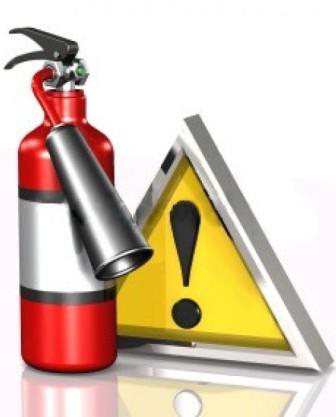
4. Cinema complexes, the total capacity of cinema halls of which is more than 300 seats, must be allocated to separate fire compartments and provided with separate evacuation exits or stairwells (at least two pieces).
5. Buildings must be equipped with the following elements:
- installations of professional automatic fire extinguishing, as well as fire alarms of a special address type;
- special smoke protection systems;
- collective and individual rescue equipment;
- fire warning system, starting from the fourth type;
- external and internal fire water supply;
- power supply for special fire protection, starting from the first category of reliability.
6. The division of premises of different classes of functional fire hazard within the same building is carried out by means of fire partitions of the second and first types. Also, the distinction to the corresponding fire compartments is made using fire walls and covers of the first type.
7. In the process of designing multifunctional buildings, calculations are necessarily made that will justify the correctness of previously adopted space-planning decisions.
Ensuring proper fire safety
All structures (buildings) are objects that have a certain degree of fire hazard, most of which have various kinds of combustible substances. Their number may be sufficient to cause significant damage. Also there is most often an oxidizing agent in the form of oxygen and an ignition source (conditions for a fire).
The main problem of fire safety of a structure is bringing its fire hazard to the proper state, in which the probability of a fire is excluded, and in a fire situation, protection of people (valuable property) is professionally provided.
Ensuring proper fire safety is achieved through the following:
- fire prevention systems;
- organizational and technical complex of measures;
- special fire protection systems.
Concerning general condition with regard to ensuring proper fire safety of the structure is as follows: it will be achieved subject to the actual amount of measures aimed at ensuring proper fire safety, the amount of measures regulated and approved by the relevant rules and regulations.
What leads to misclassification of a building?
It is generally accepted that a competent and correct definition of the functional fire hazard class is a guarantee of security. A set of rules regarding fire safety are mandatory measures that must be strictly observed. However, these rules are established by means of certain characteristics, one of which is the designation of the functional fire hazard class of the structure (building).
In order to prevent a fire, it is important to correctly classify the relevant building (building, structure, fire compartment). It is the final decision that will be taken into account in the process of drawing up the above-mentioned rules for various organizations.
If it is set incorrectly, then the current rules will be grossly violated, and as a result, the likelihood of a fire will increase significantly. This identification in relation to the functional purpose is carried out according to three main characteristics, the most important of which is the classification based on the functional fire hazard of structures (buildings).
It is worth recalling once again that, in accordance with the technical regulations on fire safety requirements, such a concept as a functional fire hazard class is a special classification characteristic of premises (buildings), which is established based on the purpose and features of the operation of these objects (including the features of their technological processes).
Send your good work in the knowledge base is simple. Use the form below
Students, graduate students, young scientists who use the knowledge base in their studies and work will be very grateful to you.
Hosted at http://www.allbest.ru/
Moscow State Construction University
Branch in Mytishchi
Examination No. 2
Topic: "Fire safety of the administrative building"
Completed by: Kotova E.D.
3 course 4 group
Lecturer: Fakhrislamov R.Z.
1. DESCRIPTION OF THE FIRE SAFETY SYSTEM
The fire safety system of the facility includes:
1. fire prevention system,
2. fire protection system,
3. a set of organizational and technical measures to ensure fire safety.
Fire prevention at the facility is achieved by:
1. the maximum possible use of non-combustible and hardly combustible substances and materials;
2. to the maximum extent possible under the conditions of technology and construction by limiting the mass and (or) volume of combustible substances, materials and the most in a safe way their placement;
3. isolation of a combustible environment by using isolated compartments, rooms, equipment, etc. (insulation of rooms of categories, B2-B4 with fire barriers with a rated fire resistance limit);
4. installation of fire hazardous equipment with the appropriate protection class;
5. the use of devices to protect equipment with combustible substances from damage and accidents, the installation of disconnecting, cutting off and other devices;
6. the use of electrical equipment corresponding to fire and explosive zones, group and category of explosive mixture in accordance with the requirements federal law dated July 22, 2008 No. 123-FZ "Technical regulations on fire safety requirements", GOST 12.1.011 and the Rules for the installation of electrical installations; the use of equipment that meets the requirements of electrostatic intrinsic safety in accordance with GOST 12.1.018;
7. lightning protection device for buildings;
8. elimination of conditions for thermal, chemical and (or) microbiological spontaneous combustion of circulating substances, materials, products and structures;
9. a decrease in the determining size of the combustible medium below the maximum allowable combustibility;
10. Compliance with the requirements of the Technical Regulations “On current building codes, codes of practice and standards.
Fire protection of the object is provided by:
The use of fire extinguishing agents and appropriate types fire fighting equipment;
Application automatic installations fire extinguishing and automatic fire alarm installations;
Devices that limit the spread of fire beyond the specified limits;
The use of building structures with regulated fire resistance limits and fire hazard classes;
Organization of timely evacuation of people and supplies service personnel means personal protection from dangerous fire factors and their accompanying manifestations;
Limiting the spread of fire outside the combustion source is ensured by:
Installation of fire barriers;
Establishment of maximum allowable areas of fire compartments;
Device for emergency shutdown and switching of installations and communications;
The use of flame arresters in equipment.
In order to ensure fire safety at the facility, the following organizational and technical measures should be developed.
For the maintenance and repair of fire protection systems for tasks, a single engineering service must be created or management company contract with a specialized organization.
As part of the security services during the construction period, there should be specialists in monitoring the implementation fire fighting measures provided by the project, and during operation - to control the operation of fire-fighting automation.
It is necessary to provide for the development, coordination and approval of instructions for the personnel of the facility, and for the engineering service for the maintenance and repair of fire protection systems, in addition - instructions for carrying out preventive and monitoring measures.
Buildings must be provided primary means fire extinguishing (fire extinguishers, etc.) in an amount that meets the requirements normative documents.
Before operating the facility, the following must be done:
Designated and equipped smoking areas;
The places and the allowable amount of raw materials, semi-finished products and finished products at the same time in the premises are determined;
The procedure for cleaning combustible waste and dust, storing oiled overalls has been established;
The procedure for de-energizing electrical equipment in case of fire and at the end of the working day is determined;
Regulated:
The procedure for conducting temporary hot and other fire hazardous work;
The order of inspection and closing of premises after the end of work;
Actions of employees upon detection of a fire;
The procedure and deadlines for passing are determined fire safety briefing and classes on the fire-technical minimum, as well as those responsible for their implementation. _
2. CHARACTERISTICS OF THE OBJECT
The administrative building is a three-story building with dimensions in the axes of 17.6x11.6 m.
Functional fire hazard class - F 4.3.
Constructive fire hazard class - CO.
The degree of fire resistance of the building - II.
Total area 609.92 m2._
Administrative building F4.3
External fire extinguishing is provided in accordance with the requirements of SP 8.13130.2009*.
Degree of fire resistance - CO II
Construction volume, m3 / number of floors - 2172 / 3
Consumption for external fire extinguishing, l / s - 15
Extinguishing time, h - 3
3. driveways and entrances for fire fighting equipment
The entrance of fire equipment is provided in accordance with the requirements of Art. 98 FZ-123, Ch. 8 SP 4.13130.2013.
To buildings of class F4.3 (Administrative building), access is provided on at least one side along the length of buildings, the height of buildings is less than 18 m - points. 8.1, 8.3 SP 4.13130.2013.
The fire station is located at a distance of no more than 1 km from the Facility.
The passage of fire engines to the nuclear power plant is provided along the passage of reinforced concrete structures.
In order to ensure the safe operation of fire departments at the site of the enterprise, the following are provided:
Fire passages and access roads to buildings for fire fighting equipment;
External fire escapes and other means of lifting the personnel of units and fire equipment to the floors and roof of the building;
outdoor and internal systems fire water pipeline, required amount hydrants.
The space-planning solutions of buildings ensure the limitation of the danger of smoke in the paths of the personnel of the subunits inside the building.
To ensure the effectiveness of actions and the safety of security units during fire suppression, the administration of the enterprise provides:
Termination of all work in the building, except for work related to
Fire elimination;
Removal of all employees who are not involved in fire extinguishing outside the danger zone;
Organization of a meeting of fire departments and assistance in choosing the shortest path to get to the fire;
Informing the fire department about the design and technological features facility, adjacent buildings and structures, on the amount of hazardous (explosive), explosive, highly toxic substances processed or stored at the facility.
4. DESCRIPTION AND SUBSTANTIATION OF THE ADOPTED STRUCTURAL AND SPACE-PLANNING DECISIONS, THE DEGREE OF FIRE RESISTANCE AND THE CLASS OF STRUCTURAL FIRE HAZARD OF BUILDING STRUCTURES
4.1 Class of functional fire hazard, degree of fire resistance, area of fire compartments
KPO class - C0
Functional fire hazard class - F4.3
Floors / Height, m - 3 / 7.8
Degree of fire resistance - CO II
Floor area within the fire compartment, m2 - 213
fire safety alarm building
4.2 Design solutions
1. Frame building - metal frame with fire protection.
2. Bearing metal constructions and metal structures that provide spatial rigidity of the frame - with fire protection - fire protection "Gefest" OSM-1, certificate C-RU.PB34.V.00858 is valid until 03/21/2017.
3. Enclosing non-bearing structures - hinged from three-layer panels "Sandwich" CJSC "Petropanel" TU 5284-001-50901814-99 with horizontal installation, with mineral wool insulation (NG).
4. Interfloor ceilings: monolithic reinforced concrete according to steel beams with fire protection.
5. Walls of stairwells - foam concrete.
6. Marches of the landing of stairs - prefabricated reinforced concrete on steel stringers with fire protection.
7. Coating - three-layer panels "Sandwich" CJSC "Petropanel" TU 5284-001-50901814-99 with insulation from mineral wool(NG) on a metal frame.
Fire resistance limit, (h)
Constructive fire hazard class
5. DESCRIPTION AND JUSTIFICATION OF DESIGN SOLUTIONS FOR ENSURING THE SAFETY OF PEOPLE IN THE EVENT OF FIRE
The building does not provide for the simultaneous stay of more than 50 people.
First floor.
An independent evacuation exit with a width of at least 0.8 m is provided from the input node room.
From the premises, at least one emergency exit with a width of at least 0.8 m is provided.
Second and third floors.
From the floors, two evacuation exits are provided - along the L1 type staircase, which has access directly to the outside and along the type 3 staircase.
The width of the exits is 1.0 m.
Width flights of stairs at least 1.2 m is provided.
The distances along the escape routes from the doors of the premises to the emergency exit do not exceed 11 m, complies with the requirements of Table 26 of SP 1.13130.2009*.
Width horizontal sections evacuation routes are provided for at least 1.0 m.
6. DESCRIPTION AND JUSTIFICATION OF FIRE PROTECTION, THE NEED TO PLACE ANTI-SMOKE PROTECTION EQUIPMENT
Exhaust smoke ventilation systems are equipped with:
Corridors longer than 15 m without natural ventilation when
fire in administrative building(clause 7.2c, taking into account clause 8.5 of SP 7.13130.2013).
EI 30 - for corridors and halls when installing valves on branches of air ducts from smoke exhaust shafts;
E 30 - for corridors and halls when installing smoke valves directly in the mine openings;
c) release of combustion products into the atmosphere at a height of at least 2 m from the roof;
d) installation check valves at the fans.
The executive elements of the smoke ventilation equipment are controlled automatically (from automatic fire alarms) and remotely (from the control panel of the dispatching personnel on duty and from the buttons installed at the emergency exits from the floors or in the fire cabinets).
7. FIRE-FIGHTING MEASURES FOR VENTILATION AND TECHNOLOGICAL EQUIPMENT, VENTILATION AND AIR CONDENSATION
Fire safety of building ventilation systems is ensured in accordance with the requirements of SP 7.13130.2009.
Limiting the spread of fire in ventilation systems is ensured by the installation of air ducts, fire dampers with a standardized fire resistance limit.
Transit air ducts and collectors within the serviced fire compartment are provided with a fire resistance limit of EI 30, floor branches are connected to vertical collectors through normally open fire dampers.
In the openings of enclosing building structures with a rated fire resistance limit and in air ducts crossing these structures, it is planned to install normally open fire dampers with a fire resistance limit of:
EI 30 - at the standardized fire resistance limit of enclosing building structures REI 45 (EI 45);
Means of automation of heating and ventilation systems are designed in order to ensure and maintain the required parameters of the air environment, improve the reliability of systems, as well as enable and disable systems according to special requirements (in case of fire, accident, etc.), save heat and electricity.
For execution specified requirements The project includes the following activities:
Blocking of ventilation systems with fire alarms in order to turn them off in case of fire;
Shutdown of ventilation systems in case of fire;
Inclusion of smoke exhaust systems in case of fire.
Fire alarm systems
1. Fire and security control panel "S2000-4"
2.Reserve power supply RIP 12 RS
3. Manual fire detector IPR-3SUM
4. Fire smoke detector IP212-3SUM
5. Light Annunciator KOP 25
6. Sound annunciator OPOP 2-35
7.1 INSTALLATION OPERATING PRINCIPLE
In the event of a fire in the parking spaces, the powder fire extinguishing system is activated.
Automatic start-up mode of the AUPT installation.
In automatic mode, when one detector is triggered, the “S2000-ASPT” device switches to the “Attention” mode and transmits an “Attention” notice indicating its address via the communication line to the “S2000-M” control panel.
At the same time, the “Attention” sound signaling is turned on, the “Attention” light indicator turns on in the constant glow mode.
When two or more detectors are triggered, the “S2000-ASPT” device switches to the “Fire” mode and transmits a “Fire” notification via the communication line to the “S2000-M” indicating its address.
At the same time, the sound two-tone signal “Fire” is turned on, the “Fire” light indicator turns on in the constant glow mode, and then the “S2000-ASPT” device switches to the “Start Delay" mode and the countdown of the programmed delay time for issuing the command to extinguish (time delay is set during programming from 10 to 254 seconds and depends on the time of evacuation of people from the protected premises) and the following light annunciators “GO POWDER”, “DO NOT ENTER POWDER” and a sound annunciator are switched on. issues a command to turn off the ventilation, close the fire dampers, turn on the smoke exhaust ventilation for the delay time and open the smoke exhaust dampers, as well as to the access control control system.
15 s before the end of the start delay time, the beep frequency of the internal sound signal is doubled; 5 s before the end of the delay time - four times. When switching to the "Start AUP" mode, the "S2000-ASPT" device issues a command to the S2000-KPB. You can reset the "Start AUP" mode by pressing the "RESET" button on the instrument panel.
The automatic start mode can be turned off:
By pressing the "Automatic OFF" button on the instrument panel,
By the corresponding command from “S2000-M”,
If the parameter "Blocking automatic shutdown in the event of a malfunction" is disabled, if there is a malfunction in the circuits for connecting light and sound annunciators, if the starting circuit is faulty.
After the countdown of the delay time has expired, the device switches to the "Start AUP" mode, the smoke exhaust is turned off and a command is issued (duration 1,4,8 or 12 seconds - the duration is programmable) to start the MPP(r)-7-I-GE_______-UHL cat. 3.1 ("Garant-7").
Remote start-up mode of the AUPT installation.
In this mode, when you press the "Start" button located at the entrance to the protected premises, the "S2000-ASPT" device switches to the "Extinguishing" mode and starts counting the time delay to start the AFS, while sound and light annunciators are turned on. Further, the operation of the devices is carried out according to the algorithm described above.
With “S2000-M” it is possible remote control"S2000-ASPT" for which you need to type the "Start" command. At the end of the countdown of the delay time, and in this start mode, the countdown of the delay time cannot be interrupted, "S2000-ASPT issues a command (duration 8 seconds) to start the extinguishing device. Further operation of the system is similar to that described above.
LIST OF USED SOURCES
Federal Law of the Russian Federation of July 22, 2008 No. 123-FZ "Technical Regulations on Fire Safety Requirements".
GOST 12.1.004-91* SSBT. Fire safety. General requirements.
GOST 12.1.033-81* SSBT. Fire safety. Terms and Definitions.
GOST R 12.4.026-2001 SSBT. Signal colors, safety signs and signal markings. Purpose and rules of application. General technical requirements and characteristics. Test methods.
GOST R 12.3.047-98 Fire safety of technological processes.
GOST 10704-91 Electric-welded steel pipes.
GOST 3262-75 Steel water and gas pipes.
SP 1.13130.2009* Fire protection systems. Escape routes and exits.
SP 2.13130.2012 Fire protection systems. Ensuring the fire resistance of objects of protection.
SP 3.13130.2009 Fire protection systems. Warning and evacuation control systems in case of fire.
SP 4.13130.2013 Fire protection systems. Limiting the spread of fires at protected facilities. Requirements for space-planning and design solutions.
SP 5.13130.2009* Fire protection systems. Fire alarm and fire extinguishing installations are automatic. Design norms and rules.
SP 6.13130.2013 Fire protection systems.
Electrical equipment. fire safety requirements.
SP 7.13130.2013 Heating, ventilation and air conditioning.
fire safety requirements.
SP 8.13130.2009* Fire protection systems. Sources of outdoor fire water supply. fire safety requirements.
SP 10.13130.2009* Fire protection systems. Internal fire water supply. fire safety requirements.
NPB 160-97 Signal colors. Fire safety signs. Types, sizes, general technical requirements.
SNiP 23-05-95 Natural and artificial lighting.
SP 17.13330.2011 SNiP II-26-76 Roofs.
SO 153-34.21.122-2003 Instructions for lightning protection of buildings, structures and industrial communications.
PUE Rules for the installation of electrical installations.
Hosted on Allbest.ru
...Similar Documents
Compliance of the actual state of the facility with the requirements of regulatory documents in the field of fire safety, taking into account the planned reconstruction of the building. general characteristics building, development of measures to improve its fire safety.
term paper, added 12/29/2012
Classification of buildings and premises according to explosion and fire hazard. Establishment of fire safety requirements aimed at preventing the possibility of a fire. Categories of premises for explosion and fire hazard.
presentation, added 02/13/2016
Fire safety system. Prospects for the development of early fire detection. Fire alarm receiver-adapter device. Description of the adapter. Principle of operation. Working with the driver, transferring information over the network.
scientific work, added 10/12/2003
Measures to improve the efficiency of fire safety. Description modern means and fire safety technologies. Regulatory documentation in the field of fire safety. Organization of the work of departmental fire protection at the airport.
thesis, added 06/26/2013
Determination of the functional fire hazard class of the building and the required degree of fire resistance. Conducting an examination of the level of fire safety of the facility and the development of engineering solutions for protection, as well as analysis and evaluation of their economic efficiency.
thesis, added 02/15/2017
Measures of fire prevention and active fire protection. Four conditions for a fire to start. Stages of development. Recommendations in case of fire. Primary and secondary fire safety requirements. Fire detection and extinguishing means.
abstract, added 01/28/2009
Checking the conformity of structural, space-planning solutions, engineering networks, evacuation routes and exits of the building. Primary and automatic means of fire extinguishing and fire alarms. Measures to ensure fire safety.
term paper, added 12/26/2014
Characteristics of the object, design features and a preliminary assessment of its fire hazard. Examination of building structures, interior layout building. Evaluation of escape routes and exits, smoke and explosion protection solutions.
term paper, added 06/24/2011
Examination of constructive, space-planning solutions, building structures and building materials buildings for compliance with fire safety requirements. Evaluation of the effectiveness of measures to ensure the fire safety of the facility.
term paper, added 06/26/2015
The problem of loss of life in fires is a matter of particular concern. Definition of fire safety, the main functions of the system for its provision. Causes and sources of fires at work. Fire safety at home. Fire prevention measures.





